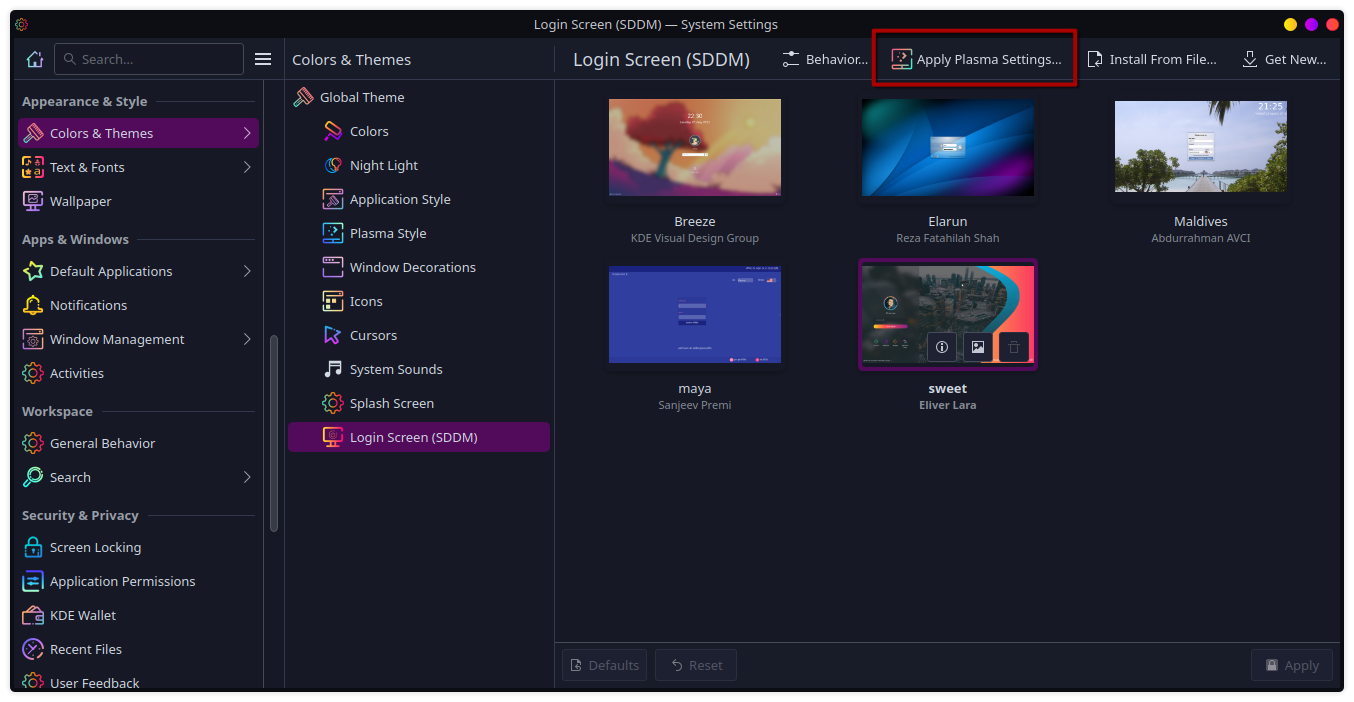

The Twitter thread says that the website with the linked keys is a fake imposter site. Not sure how true that is, but if so, that’s fucked.


The Twitter thread says that the website with the linked keys is a fake imposter site. Not sure how true that is, but if so, that’s fucked.
Correct. Unfortunately, it’s something that each desktop environment or window manager has to implement themselves. But all the button is doing is moving some config files around, so you can probably do some digging to figure out what it’s copying to where.
This is the system settings application for the KDE desktop environment.
Literally yes. And you don’t even need to know the exact pixel resolution of the TV.

Edit: Here are the problems with you “Wayland isn’t good enough” people.
First, you don’t use Wayland, so you don’t even know if it’s fixed whatever weird issue you encountered with it before or if it supports a niche use case, for example.
Second, Wayland won’t get good enough for you until you start using it and reporting bugs. You think X11 was a bed of roses when it first started? Or do you think they bumped the version number 11 times for fun?
Not sure if you’re a troll, but if you’re serious, nothing I say is going to change your mind, so I won’t bother.
If you’re using Wayland, you can go to Settings -> Colors & Themes -> Login Screen (SDDM) and click “Apply Plasma Settings…”

If you’re using X11, it looks like you’ll have to resort to hacky scripts, unfortunately.
Source: https://discuss.kde.org/t/how-to-change-monitor-layout-and-orientation-in-sddm/3377


I’m curious, my playthroughs of both the original and the remake were so long ago - but does D-pad movement buy the player anything? I agree it’s rather silly that it’s not an option, but I don’t remember being hampered by the control scheme in any way.


Oh nice! I just use Lutris, but options are always good.


I disagree, it’s a statement of fact. There’s nothing inherently wrong with that fact that you’re lazy about fiddling with computers. I’m lazy about certain things in my own life.
But it’s pointless trying to convert lazy people to Linux when it requires an effort level above 0 and they don’t want to put in anymore than that.


Cool, you’re lazy, gotcha.


No, I literally had to add one change to the game launch properties one time. It took me probably 3 minutes of googling and following instructions. I wouldn’t call that “a bunch of fucking shit”.


Cool, me too.


Helldivers 2 works almost perfectly on Linux. I had to nest it in a gamescope session to fix some weird mouse issues, but that was it. I dual-boot Windows and I’ve never even launched it there.


Samesies! Happens almost anytime I’m drinking a cold drink.


Fun fact, Caesar salad is named after the guy who invented it, an Italian living in Mexico at the time.


I could go in-depth, but really, the best way I can describe my docker usage is as a simple and agnostic service manager. Let me explain.
Docker is a container system. A container is essentially an operating system installation in a box. It’s not really a full installation, but it’s close enough that understanding it like that is fine.
So what the service devs do is build a container (operating system image) with their service and all the required dependencies - and essentially nothing else (in order to keep the image as small as possible). A user can then use Docker to run this image on their system and have a running service in just a few terminal commands. It works the same across all distributions. So I can install whatever distro I need on the server for whatever purpose and not have to worry that it won’t run my Docker services. This also means I can test services locally on my desktop without messing with my server environment. If it works on my local Docker, it will work on my server Docker.
There are a lot of other uses for it, like isolated development environments and testing applications using other Linux distro libraries, to name a couple, but again, I personally mostly just use it as a simple service manager.
tldr + eli5 - App devs said “works on my machine”, so Docker lets them ship their machine.


The reason this works well for certain applications and not others comes down to programming language / framework and compilation optimization.
If the application was compiled directly into an executable binary and optimized, it can be decompiled, but it won’t be human-readable. Programmers would have to delve in and manually trace the code paths to figure out how it works. Fun fact, this is how a lot of the retro game decompilation projects are happening. Teams of volunteers are going through the unreadable decompilations and working together to figure them out.
Dotnet and Java based applications are easier, because they don’t usually get directly compiled into machine-executable binaries, and even when they do, it’s still easy to decompile them. This is because they’re both compiled to an intermediate language that’s more optimized than the original, then that IL is run by a runtime. Dotnet’s IL is called Common Intermediate Language and Java’s is called bytecode. This sounds weird, but it’s kinda cool, because it lets people write different languages without having to have a full compiler. They just have to be able to get it compiled to an intermediate language, and then the existing runtime can take it from there.


That sounds like the default GitHub boilerplate message, to be fair.


Layoffs for three of their most successful studios? That’s surprising.
IIRC, Samsung recently announced they’re moving to A/B partitioning as well.